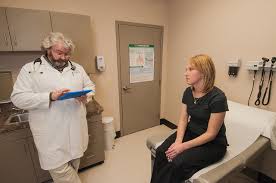Personal Injury Medical Records – What to Look For
 Physician office records may hold the keys for analyzing personal injury cases. These personal injury medical records can make or break a plaintiff’s case. It is crucial that you as the legal nurse consultant are able to read and decipher these records in a personal injury case. Look for these pieces of information.
Physician office records may hold the keys for analyzing personal injury cases. These personal injury medical records can make or break a plaintiff’s case. It is crucial that you as the legal nurse consultant are able to read and decipher these records in a personal injury case. Look for these pieces of information.
Personal Injury Medical Records – Damages
- Are you able to read the physician’s records or are they illegible, warranting a transcription by the physician?
- Did the doctor accurately describe a pre-existing condition? Is his or her description consistent with other providers who may have seen the patient before an injury?
- Do the personal injury medical records document the claimed injuries were objective or subjective in nature?
- Were any or all of the injuries documented as soft tissue injuries? (These constitute less serious injuries than fractures, for example.)
- Were the documented injuries consistent with the mechanism of injury? In motor vehicle crashes, look for descriptions of star-shaped patterns on the windshield with head injuries. Look for notations of dashboard damage if a knee injury is claimed. Look for observations of seat belt type injuries to the neck, chest, and abdomen.
- If the patient had fractures, were x-rays taken in the physician’s office after the initial evaluation? If yes, is there a report? What did the x-ray report show? Do the reports document progressive healing?
- Did the x-rays comment on pre-existing degenerative changes (i.e., osteophytes, arthritic changes, degenerative joint changes, scoliosis, spina bifida occulta, or chronic changes)? Is there evidence of acute injuries?
- Was the physician’s diagnosis supported by his or her examination?
- Were services rendered on the dates recorded or do the bills include charges for dates the patient was not seen?
- Do typed reports match the information in the handwritten notes?
- Did the doctor support the medical diagnosis with a description of the patient’s symptoms?
- Were the facts obtained and recorded in the history correct? Do the facts in the personal injury medical records history match the rescue squad and ED records?
- Was the treatment plan appropriate, or was there extensive, ongoing treatment for minor injuries?
- How often did the doctor see the patient after the injury?
- At what point did the doctor state the patient had reached maximum medical improvement (MMI)?
- Was there any correlation between the patient’s maximum medical improvement and the date the insurance company stated it would stop paying for services?
- Were there any indications of medical malpractice in the physician office records?
Personal Injury Medical Records – Treatment
Your ability as an LNC to analyze personal injury medical records makes you an essential member of the legal team.
PatIyer MSN RN LNCC is president of The Pat Iyer Group. Get more tips on how to overcome medical record traps by watching a replay of a webinar presented by Pat Iyer MSN RN LNCC: “Medical Record Traps and How To Overcome Them”. Get details at this link.
